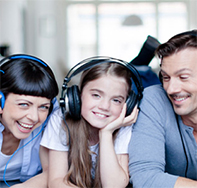Advanced Brain Technologies Conference
by Siegfried Othmer | August 28th, 2015By Siegfried Othmer, PhD
 We recently returned from the Annual Conference of Advanced Brain Technologies, meeting in Ogden, Utah. Roxana Sasu and I were on the program, and Kurt handled the exhibit. The conference had a lot of the same tone and flavor of our own Clinical Summit in that a large body of enthusiastic practitioners had gathered for the occasion. Here was an opportunity for them to interact with like-minded practitioners, hear about the latest findings from clinical studies, listen the academic researchers on related topics, and just luxuriate in each other’s company.
We recently returned from the Annual Conference of Advanced Brain Technologies, meeting in Ogden, Utah. Roxana Sasu and I were on the program, and Kurt handled the exhibit. The conference had a lot of the same tone and flavor of our own Clinical Summit in that a large body of enthusiastic practitioners had gathered for the occasion. Here was an opportunity for them to interact with like-minded practitioners, hear about the latest findings from clinical studies, listen the academic researchers on related topics, and just luxuriate in each other’s company.
Some impressive case histories were presented that were startling in their implications for brain plasticity, on the one hand, and in the power of conceptually simple techniques such as The Listening Program to elicit it. For example, a case of open head injury was presented in which attending doctors had implored the family on several occasions simply to pull the plug. The prospects of survival and of recovery were that bleak. After having been pulled out of her car (which had plunged into a river) in a state of coma, and having lost blood supply to her left hemisphere along with a good portion of her skull, it was judged that she would never be able to talk; she would never walk; and she would never be able to eat normally.
After some two years of therapy based largely on ABT audio technologies, the girl is doing all of the above. This after spending several days at a Glasgow coma scale of three. The teenager, who had had her driver’s license for less than a month when the accident occurred, regained consciousness after four months, and the auditory training began two months later. Before hearing this story, I would have assumed that one would need to rely on EEG neurofeedback to achieve such a substantial recovery. In this case, various auditory challenges were able to achieve the same ends.
It was also reported that she needed the auditory training in order to retain the gains that she had made. If the training was suspended, she would begin to lose function. This is persuasive on the point that we are not just dealing here with spontaneous recovery.
There were also setbacks along the way. She had a fall in late 2013, and suffered a seizure. She lost what she had regained of speech. Cognition suffered as well, and she was incontinent once again. She recovered with the help of the auditory training.
The ‘In Time’ program was added to The Listening Program one year after therapy had begun. Speech became clearer, and there were improvements in motor planning. The ‘In Time’ program challenges the brain in the timing domain, mainly through the use of percussion instruments.
Another speaker gave personal testimony on her own recovery from a CVA using the audio technologies. Jointly these stories gave powerful and incontrovertible testimony to the potential of the auditory stimulation technologies to aid in the recovery from brain injury. This also means that these methods should not just be seen narrowly in the context of auditory processing disorders.
In our perspective we would be inclined to see these technologies in a complementary role to neurofeedback. Ultimately there is virtue in the reliance on multiple, independent brain challenges in combination with ILF training. In this context, the ILF training should be seen not so much as another brain challenge, but rather as a kind of relaxation training. It takes the brain toward calm states, and thus aids in the re-normalization of resting state organization—-which happens most propitiously in the absence of any overt brain challenge. The first obligation in recovery from brain injury is to unburden the brain from demands and to allow it to recover on its own. ILF training facilitates this process marvelously by simply providing information to the brain that guides its intrinsic recovery processes. This was essentially the message in my own presentation.
Roxana Sasu presented a case of a young child who might in time have been labeled as being on the autism spectrum if there had been no early intervention. This child was first trained with ILF at three weeks of age, and she was repeatedly trained subsequently over a period of years. Auditory training was added in the later years, and the child benefited from both. This report illuminates the other strong suit of neurofeedback, either on its own or in combination with auditory challenges—-the support of early childhood development. Both techniques are well tolerated by the young, and both can be undertaken simply in the interest of furthering sound development. There is no diagnostic threshold. There is no age or maturity threshold. The brain is just better off for the experience of the training.





